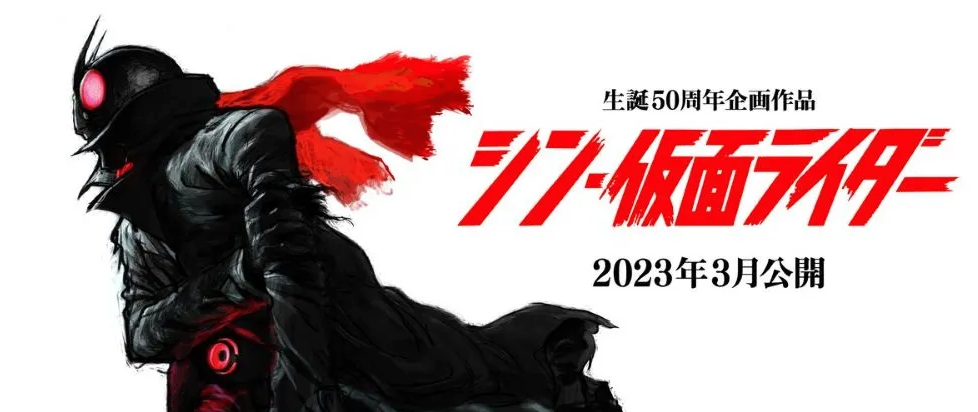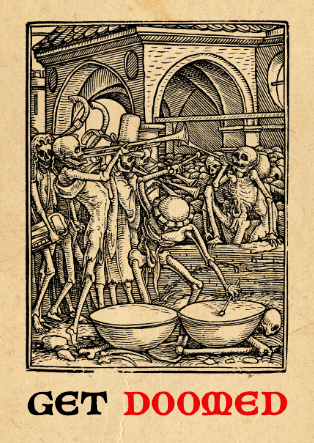
Happiness and Pain: Going Cold into Shin Kamen Rider (2023)
“When you fight evil, the whole world wins.”
Years ago now, I passed on seeing Shin Godzilla in the theater because I was convinced that I wouldn’t like it. I thought it was going to be an edgy take on Godzilla that I believed I absolutely didn’t need. I have regretted it ever since.
When I finally watched Shin Godzilla on home video I discovered it to be a genuine classic, one of the best films of the 21st century so far, and certainly one of the best to bear the Godzilla name. I kicked myself for missing my chance to see it on the big screen.
This year, I’ve had the opportunity to… if not exactly correct that mistake, then at least avoid making it a second time. First, back at the beginning of the year, when Shin Ultraman – from some of the same creative team – took a two-night bow in American theaters, and more recently when Shin Kamen Rider, once more from director Hideaki Anno, did the same for one night only.
Here’s the thing, though. While Shin Godzilla was a legitimate masterpiece, I’m not positive that the same is true for these films. Hideaki Anno and company seemed to have a legitimate vision for transforming Shin Godzilla into something genuinely new that also honored the legacy of the original. For these other films, they seem to be retreading more familiar ground.
That’s not the real difference, though. The real difference is that I know Godzilla, pretty well back-to-front, meaning that I know what the filmmakers were repurposing, and what they were bringing to the table that was new. With Ultraman, my knowledge is a lot thinner, and with Kamen Rider it is nonexistent.

When I saw Shin Ultraman earlier this year, I was able to confidently assert that it did for the earliest Ultraman series what Shin Godzilla did for Godzilla ’54, which reminds us all that those two things are very different from one another. I knew enough about Ultraman – and the series that preceded it, Ultra Q, which gets several nods in the Shin version – to say that much. About Kamen Rider I know almost literally nothing.
Prior to sitting down in the theater, I knew that Kamen Rider was an early example of a sentai show – the kind that would eventually give us Power Rangers here in the States – and that the title character had a helmet like a grasshopper and rode a motorcycle. Someone online told me that he fought cyborgs. This was literally the extent of my knowledge.
The first surprise in Shin Kamen Rider was how bloody it is. I have never seen any of the many TV series starring the character, but I’m guessing they do not boast this much red stuff. Not even Shin Godzilla – which is the only one of this unofficial trio that could be called a horror movie – is anywhere near this grisly, unless you count the gallons of bloody water that slough from the gills of Godzilla’s early lungfish incarnation.
Sure, the body count in Shin Godzilla is much higher, but those are people caught in the crosshairs of a natural disaster, essentially. Killed in huge numbers, usually offscreen. In Shin Kamen Rider, we are talking about fists and feet literally demolishing human heads, as blood splatters everywhere. The brutality even shocks our protagonist, who stands in front of a mirror looking at his bloody hands and wondering, “Did I kill them?”

You sure did, buddy.
Despite how much more violent it is, Shin Kamen Rider has more in common with Shin Ultraman than it does with Shin Godzilla. Like Ultraman, it feels mostly like an entire season of a TV show somehow condensed into two hours. As such, it never lets up. The entire movie, from the literal opening seconds to the final denouement, is divided into two styles: breakneck action and breathless exposition. That’s about all you get.
Like Shin Ultraman, its handling of all this is often inspired. There’s more visual punch in any 15 minutes of Shin Kamen Rider than a dozen other blockbusters. And it leans into the camp and the tackiness of its subject matter, with everything from villains who still have wholly anime-style motivations to fight scenes that are more staccato sequences than choreographed dances. Though Kamen Rider is obliged to go through what I assume are a number of familiar attack styles, each conflict is kept visually interesting via different staging and lighting. And that’s not even going into the fact that this is one of the first films in a long time that has made me want to immediately buy the soundtrack.
As much as both Kamen Rider and Ultraman are movies bursting with an almost manic energy that is enough to make most Hollywood output feel exhausted and stilted by comparison, neither of them seems to even approach what Shin Godzilla was doing – or try to. They appear to be content to recreate the originals in a new way, for a new generation, where Shin Godzilla was repurposing the classic into something entirely new.
Is it okay that they’re not so ambitious? I think so. They’re still a blast to watch. And not all movies can be masterpieces – or should try to be.
———
Orrin Grey is a writer, editor, game designer, and amateur film scholar who loves to write about monsters, movies, and monster movies. He’s the author of several spooky books, including How to See Ghosts & Other Figments. You can find him online at orringrey.com.



